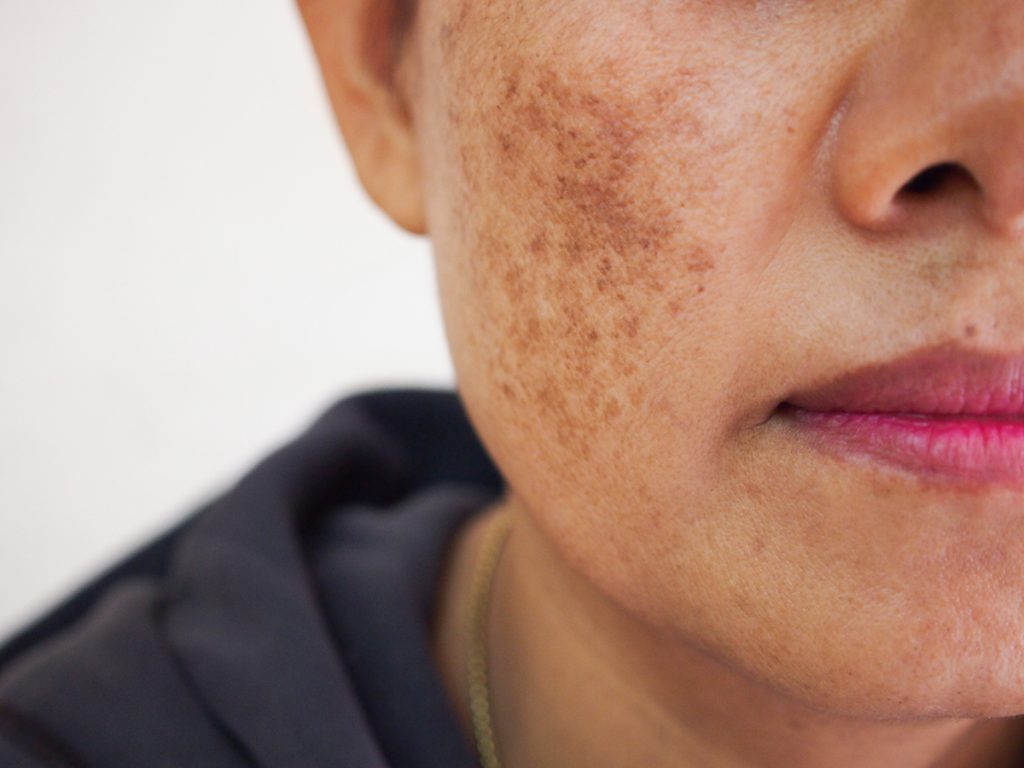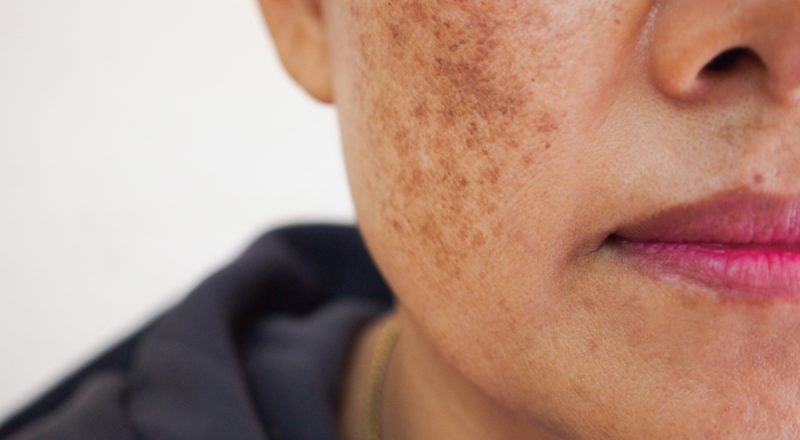Introduction
Our skin is a remarkable organ that comes in a beautiful array of shades and colors. Skin pigmentation, which is the color of our skin, is determined by the amount and type of pigment called melanin produced by melanocytes in the skin. While having a variety of skin tones is a testament to our genetic diversity, skin pigmentation issues can arise due to various factors. In this blog, we will explore and understand the types, causes, treatments, and prevention strategies related to skin pigmentation.
Types of Skin Pigmentation
- Hyperpigmentation: Hyperpigmentation refers to areas of the skin that are darker than the surrounding skin. It can be caused by several reasons, including:
- Sun Damage: Overexposure to the sun’s harmful UV rays can lead to the development of dark spots, commonly known as sunspots or age spots.
- Melasma: This is a common condition that causes gray or brownish patches on the face, particularly in women during pregnancy or while taking birth control pills.
- Post-Inflammatory Hyperpigmentation (PIH): PIH occurs after an inflammation or injury of the skin, such as acne, burns, or cuts, and leads to dark spots in the affected area.
- Hypopigmentation: Hypopigmentation is the opposite of hyperpigmentation, where areas of the skin have lighter pigmentation. This can be caused by various factors, including:
- Vitiligo: This autoimmune condition causes the loss of melanocytes in certain areas of the skin, resulting in white patches.
- Albinism: Individuals with albinism have a genetic condition that prevents the production of melanin, leading to very light or white skin.
- Pityriasis Alba: Common in children, this condition causes round or oval white patches on the face.
Causes of Skin Pigmentation

- Genetics: Your skin color is primarily determined by your genetic makeup. Individuals with more melanin-producing melanocytes tend to have darker skin, while those with fewer melanocytes have lighter skin.
- Sun Exposure: Overexposure to UV radiation from the sun or tanning beds can stimulate the melanin production in the skin, leading to hyperpigmentation.
- Hormonal Changes: Hormonal fluctuations during pregnancy, menopause, or while taking birth control pills can trigger melanin production, causing conditions like melasma.
- Inflammation and Trauma: Skin injuries, such as acne, burns, or cuts, can lead to post-inflammatory hyperpigmentation (PIH) as part of the healing process.
- Medical Conditions: Certain medical conditions, like vitiligo or albinism, are genetic and affect melanin production.
- Medications and Chemicals: Some medications, such as certain antibiotics and chemotherapy drugs, can cause skin pigmentation changes as a side effect.
Treatment Options for Skin Pigmentation
- Topical Treatments:
- Sunscreen: Regular use of broad-spectrum sunscreen with SPF 30 or higher can prevent further pigmentation changes caused by sun exposure.
- Topical Bleaching Agents: Prescription-strength products containing ingredients like hydroquinone, retinoids, or kojic acid can be used to lighten hyperpigmented areas gradually.
- Chemical Peels: Dermatologists can perform chemical peels using acids like salicylic acid or glycolic acid to exfoliate the top layers of skin and reduce hyperpigmentation.
- Laser Therapy: Laser treatments, like intense pulsed light (IPL) or fractional laser therapy, can target melanin and effectively treat various pigmentation issues.
- Microdermabrasion: This procedure involves gently exfoliating the skin to remove the outermost layer, improving the appearance of hyperpigmented areas.
- Cryotherapy: Cryotherapy is technique in which liquid nitrogen is used to freeze and remove hyperpigmented areas, such as warts or seborrheic keratoses.
- Topical Steroids: In some cases, topical steroids may be prescribed to reduce inflammation and lighten pigmented areas.
Preventing Skin Pigmentation
Preventing skin pigmentation issues is often more manageable than treating them. Here are some preventive measures to consider:
- Sun Protection: The most helpful way to prevent sun-induced pigmentation is to protect your skin from UV radiation. This includes wearing sunscreen, protective clothing, and wide-brimmed hats and avoiding direct sun exposure during peak hours.
- Avoid Irritation: Be gentle with your skin. Avoid picking at blemishes or using harsh scrubs, as these can lead to post-inflammatory hyperpigmentation.
- Hormonal Balance: If you’re prone to hormonal pigmentation like melasma, consult a healthcare professional to manage hormone fluctuations effectively.
- Regular Skincare: Establish a consistent and subtle skincare routine that incolves gentle cleansing, exfoliation, and the use of tropical products with antioxidants and skin-repairing ingredients.
- Consult a Dermatologist: If you find any abnormal or strange changes in your skin pigmentation, consult a dermatologist. Early detection and treatment can prevent further pigmentation issues.
Conclusion
Skin pigmentation is a complex and fascinating aspect of human diversity. While some pigmentation issues are genetic and beyond our control, many can be prevented or effectively treated with proper care and professional guidance. Remember that maintaining healthy skin and preventing pigmentation problems often require a combination of protective measures, skincare routines, and medical interventions. Prioritizing sun protection and early consultation with a dermatologist can help in ensuring that your skin remains healthy and radiant.
